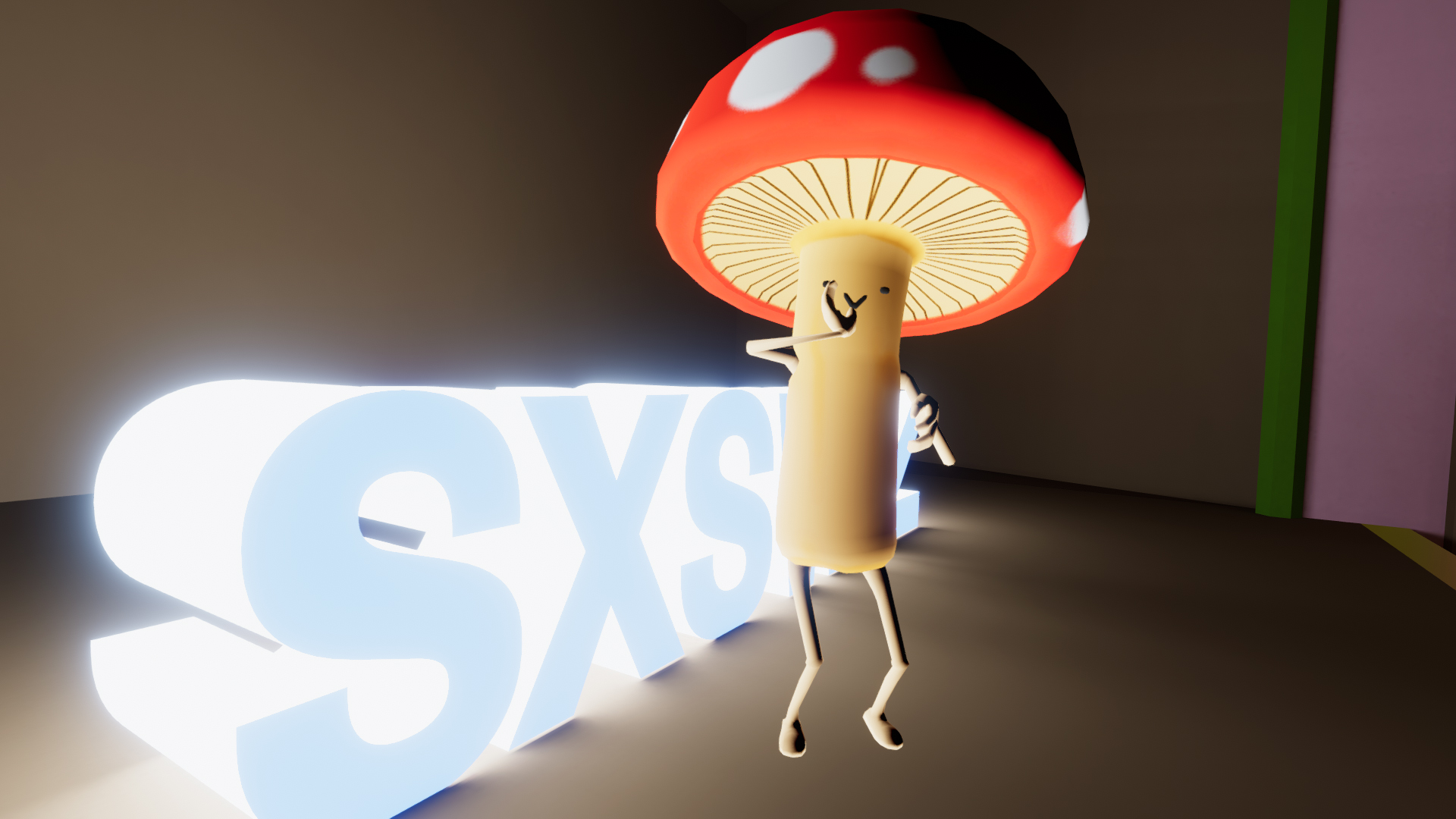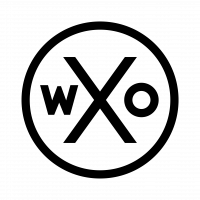Alessia Clusini is a data strategist and the Founder of Trybes Agency, a consumer research agency that has figured out a way to debunk the complexity of transformative experiences, measure their impact and replicate it. She is also a Co-Founder of the WXO. This year, she went to SXSW virtually. For the WXO, she has filtered all that she saw and heard and distilled it down into seven key lessons.
Read part one here and part 3 here – and in this second instalment below...
Lesson 2: Make the most of online to connect audiences with the best content and people
ONE SIGNIFICANT BENEFIT OF SXSW ONLINE was the chance to find people that share your cultural fit, interests, or work.
How did they do it? By making the events pages extremely informative and interactive.
Let me explain. On the pages of each keynote, exhibition, movie/music premiere or live event, you could find the content, the attendees and the live discussion chat. This mix gives people the chance to see who’s attending (and then potentially network with them), interact all together by live chatting during the events, make questions, and join polls.
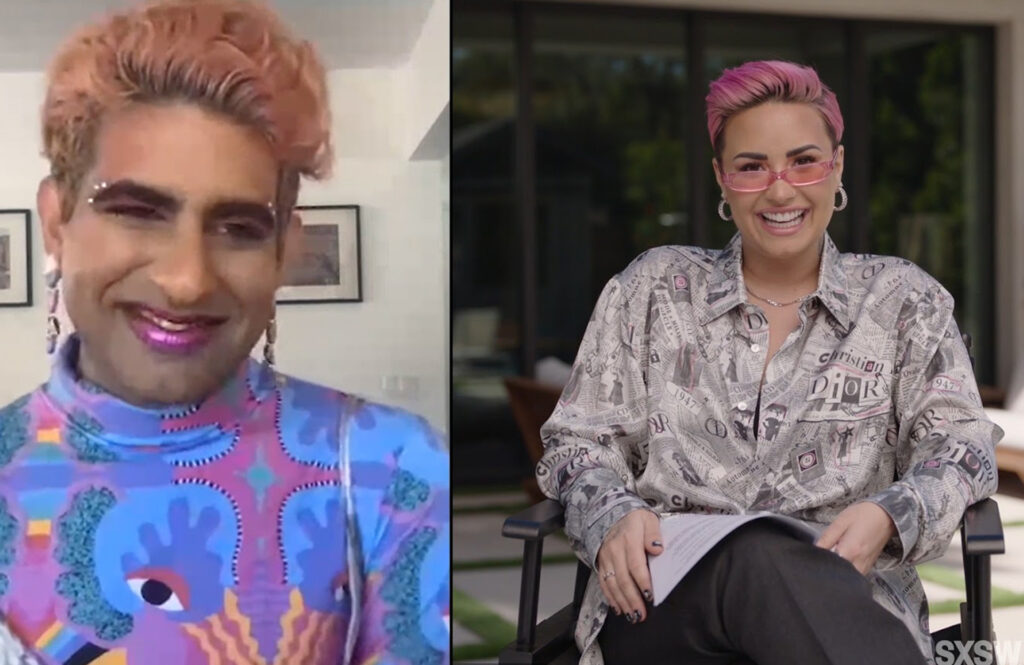
Thanks to this, I could engage with likeminded people and learn from professionals who raised questions and commented on the experiences I was attending.
So big thumbs up to SXSW for showing this kind of information (who’s attending what, their profiles, social channels and jobs) and making the engagement experience extremely easy.
But, they could go a little bit further and:
- Connect people to network with others in meaningful ways, based on their cultural fit, interests, or work, using hybrid intelligence (below).
- Show the best content for them, using the same methodology and insights.
Yes, I know that there was a recommendation algorithm (AI matches) for people to connect with, but it sucked. :O So what I did instead was this: I manually browsed a few hundred profiles of people attending my favourite events, reached out to a few selected ones, and made some friends/connections. It did work in the end, but it took forever, and I wished they had a hybrid intelligence doing this for me 😉
I’ve seen hundreds of SXSW attendees asking how to navigate the massive amount of content. Well, the only way to solve this crucial problem, connecting people with the right content, is to build a solid recommendation system – the kind of algorithm that initially powered Netflix, for example.
So lesson number two for the experience and events profs is: if you’re working on an online or hybrid event, you might as well make the most of it by using targeting. You want to connect attendees/users with the best people and content, so they’ll have the best experience.
Now, this lesson was inspired by SXSW content layout, but, as I said, there is still a lot to do even there in terms of audience understanding and building a recommendation system that doesn’t suck.
If you’re working at SXSW, the main steps are therefore:
- Audience Analysis: 2021 conversations analysis (both in Swap Card, owned media and online), profiles analysis and UX analysis (including feedback)
- Content Analysis
- Build a recommendation algorithm that uses quant and qual data to connect people to target people and people to target content
- Work on the discoverability of people and content through tagging, description and UX
A colleague of mine, Ruud, Co-Founder of the Event Design Collective, and I shared thoughts on the events main assets: content and people, and their future.
In his own words:
Micro-targeting of content of common care. The content may forge relationships of thought which then can be a trust accelerator to form human connections from the event relationships.
Ruud Janssen, Co-Founder of the Event Design Collective
We both went to SXSW and heard this together. Thus we must be “good” people = trust acceleration. This will also create tribes of like-minded people, which in turn may have an opposite truth of creating polarised reinforcing views within the bubble of thought.
I second this. Years spent studying how people aggregate around topics of interests brought me to this sort of conclusion: there is a true goldmine in the connection of content and people, and the first few events that discover that will be the winners.
Lesson 3: Make the most of online to open up access
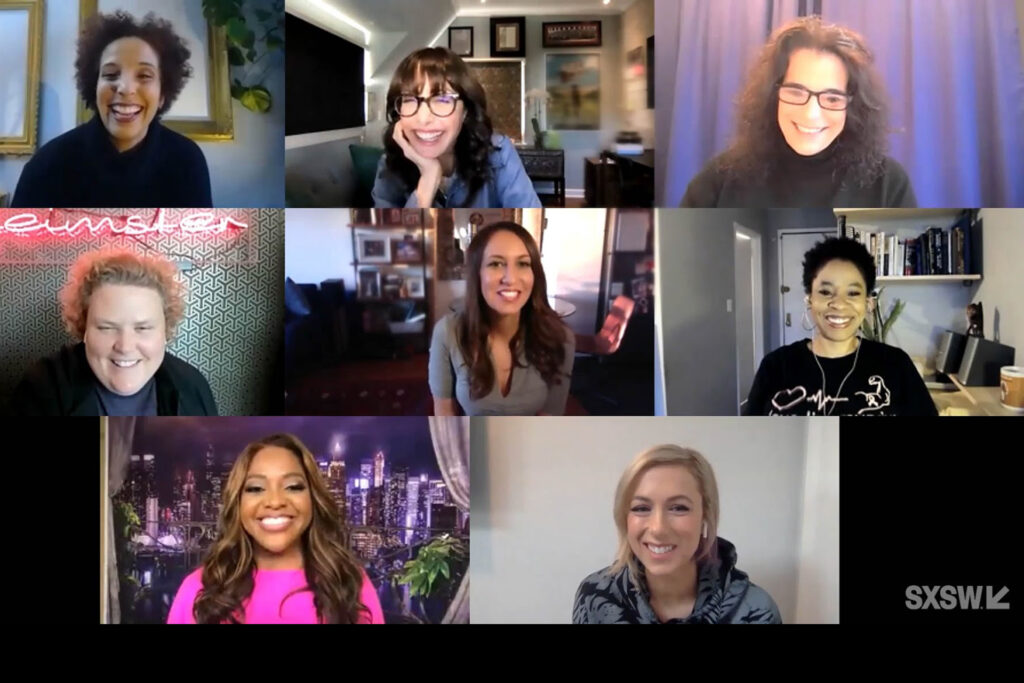
The online realm opens up worldwide audiences, making events truly scalable.
I mean, duh. 😀
Easier said than done, though, across multiple time zones.
The SXSW 2021 method seemed to be constituted by two main factors:
- Schedule some cool parties/live events during US daytime so that people abroad could join too.
- Make all the content available on-demand for a limited time, even after the event.
The most evident outcome of increasing access to events is amassing new audiences. I’ve come across quite a few SXSW newcomers this year, all saying pretty much the same thing:
I’ve bought the online ticket because it was cheaper and requested far less commitment in terms of time and effort. Now that I got to know the vibes of SXSW, I’m coming to Austin!
Additionally, on-demand content worked in terms of ease of consumption: it was easier for attendees to watch any movie, concert or panel than in the past, when they might have missed them because of lack of seats, simultaneous content or distance.
On this, SXSW veteran Carl Flynn, Director of Marketing and Communications for Information Technology and University Libraries, explained to me:
I loved the online experience relative to the conference content. When I am in person on the streets of Austin, I can only be in one place at one time (obviously). With the extent of the crowds (especially on key sessions) I have about an 85% chance of getting into the room.
When my room overflows, I have to seek out another nearby session because often my other preferred sessions are far away and by the time I get there I would miss a good portion of the content. So, often if a room is booked, I lose a session and have no way to ever see/hear the session I missed or the other four concurrent sessions that I am missing that I wanted to see/hear.
The online platform avoids all of this, making the content more available and more flexible. I can catch “live only” sessions and then weave other on-demand content around it on my schedule to really draw content from the conference experience.
An additional upside is that I was able to enjoy the film festival, when in person the venues are often so small that I never get in to see the films that my Conference badge will allow. I’ve stood in line for 2 hours in the past only to not get in. So the online platform for the film festival provided the opportunity to enjoy that as well.
And finally, the on-demand availability opens up possibilities for ‘long tail’ content, enabling, in perfect SXSW style, the cross-pollination of ideas across cultures and industries.
Something like ‘The Future of Open Archives: Hidden Voices‘, a panel that brought together a diverse group of archive professionals, artists, activists and documentary storytelling practitioners, adds a tangible value to SXSW in terms of culture. It’s not the ‘blockbuster’ Harari’s keynote, and it goes deeper into independent and community-based perspectives. Being available on demand just made extra space for people like me to attend it. On the other hand, if it was only happening simultaneously as networking events and key sessions that we have to follow for work, it might have suffered from being a bit more niche than others.
Lesson 4: Use tech to unlock the power of your community
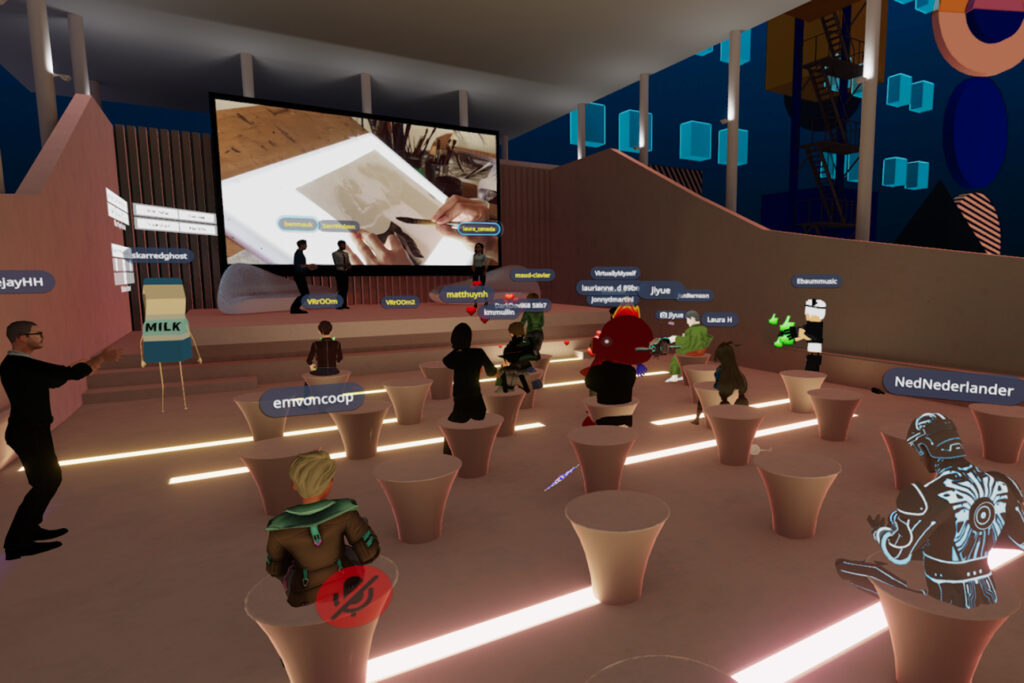
Community was the word I most heard mentioned at this SXSW, from cultural panels to business keynotes like ‘Audience Wild West: Insurgent Categories Redefining Marketing‘, where executives from Tinder, Peloton, Snap and Twitch talked about how fast-growing media and experience companies are becoming more and more relevant in the stay-at-home lifestyle.
So, what’s the SXSW insight relative to community and how to maximise it? The MVP of “community enabling” was the simple but highly impactful online chat on the events pages. It resulted in being far better than IRL audience engagement: people gathered around the keynotes asking questions and sharing ideas and experiences in a forum-like manner. Audiences were interacting and feeling part of something like never before. In this case, being online just took off some pressure and discomfort (not everybody wants to raise their hands and speak in front of 300 people at the end of a conference) and democratised participation in the topics.
And if the event chat is the smallest tech that enabled the most significant amount of belonging, it was not the only tool. With meetups, mentorships (greatly reviewed by the people I’ve interviewed) and an exclusive invite to SXSW Clubhouse, this year felt like networking opportunities opened up.
However, on top of everything, what brought SXSW vibes and community to life was the incredible SXSW Online XR (shown below), accessible through a VR set. It wasn’t just the Austin venues’ recreation, including pieces of street art, buildings, and streets. It wasn’t even the focus on using tech to enable social interactions, scalability (small groups of 40 people could join at one time) or programming interaction with space and objects.
The magic of the SXSW virtual world was that it felt very much like SXSW. It seemed to extend the SXSW vibes, making us, the 2021 attendees, go from a “good enough” expectation to “weird, wait, actually great”.
Blake Kammerdiener, the first to believe in the idea and bring it to the others, explained to me that the biggest deal was making the immersive platform fully integrated with the event, as it doesn’t always happen.
Our little hacks, there was a lot of thought and care and debate on how to make that work for us, which I think it did, in the end. You could feel it from the attendees there. It felt like a community, which was amazing. I ran into musicians, film people, directors, all sorts of theatre folks, and all sorts of people who are in the tech side of things. I ran into all of them.
I found it amazing, that parallel inside that world to what we have always experienced with SXSW attendees. And I did that over and over again, which is exactly what I wanted to happen. I wanted people to have those serendipitous meetings that happen in a real-life festival.
True. I met terrific people at SXSW 2021. Starting with Blake himself, who showed me around like a sort of VR version of Cicerone, uncovering rare doors and secret places that made me love SXSW even more. To some just-met-Big-Knight that saved me from feeling awkward at my first attempt in a VR social set to Thomas, my first VR friend, with whom we shared a virtual beer and super-interesting chats around education, new media ecosystems and how humankind is evolving in those.
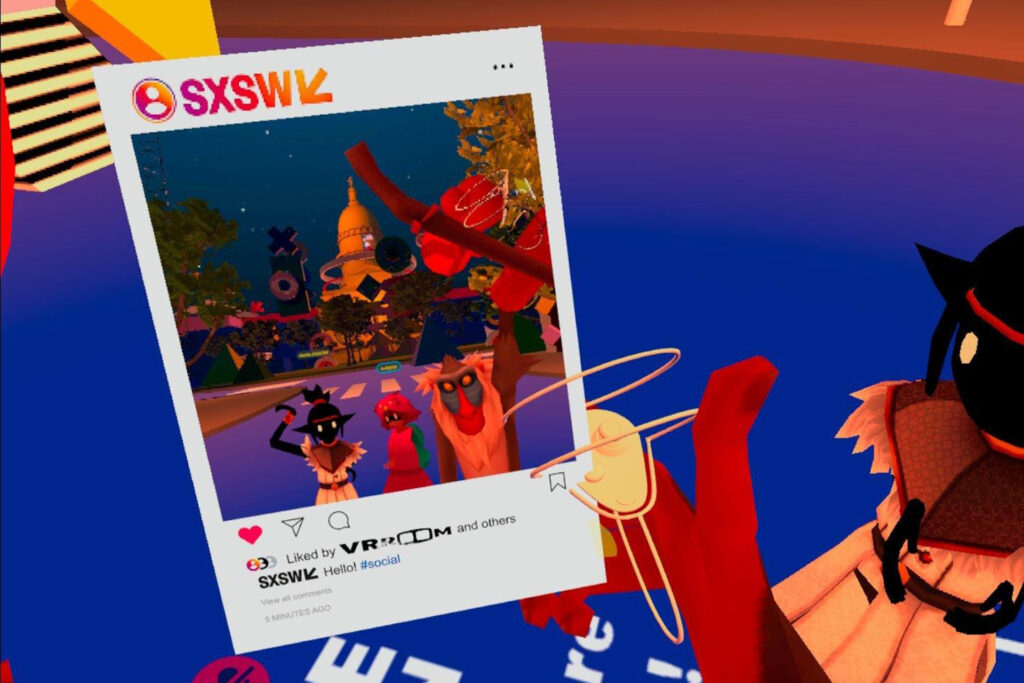
I had a blast. I felt like a kid entering a new world, and I found people that were patient and passionate enough to make my experience much better. Which is a peculiar festival experience, according to our research.
Was it all perfect? No, and if I could suggest a trivial improvement that could change the whole experience, it was the lack of information around what was happening in the VR world – but that’s a point for the last chapter, where we focus on UX. 😉
If you haven’t already read part 1, you can do so here now – and part 3 is now available here.

